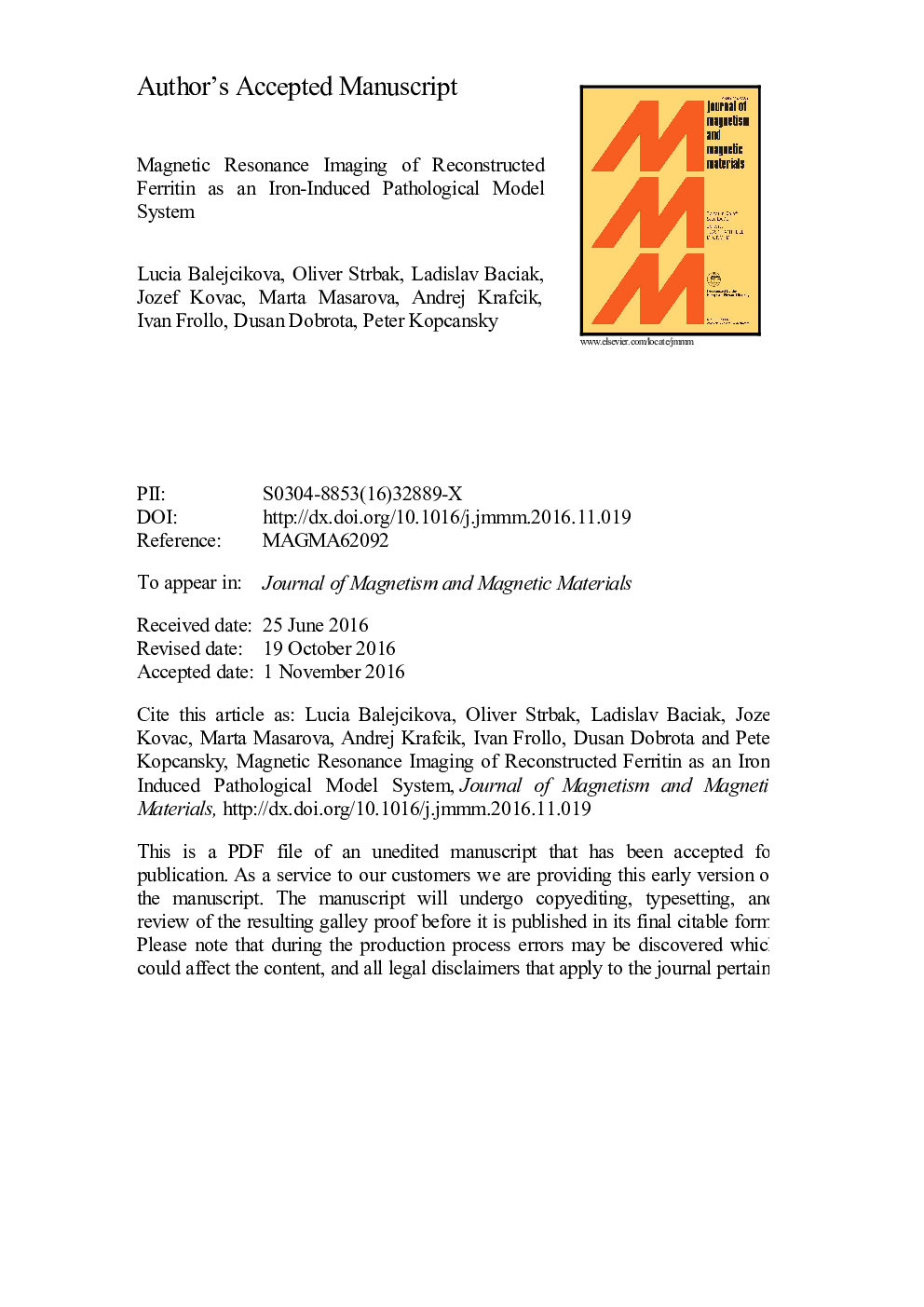| Article ID | Journal | Published Year | Pages | File Type |
|---|---|---|---|---|
| 5491168 | Journal of Magnetism and Magnetic Materials | 2017 | 22 Pages |
Abstract
Iron, an essential element of the human body, is a significant risk factor, particularly in the case of its concentration increasing above the specific limit. Therefore, iron is stored in the non-toxic form of the globular protein, ferritin, consisting of an apoferritin shell and iron core. Numerous studies confirmed the disruption of homeostasis and accumulation of iron in patients with various diseases (e.g. cancer, cardiovascular or neurological conditions), which is closely related to ferritin metabolism. Such iron imbalance enables the use of magnetic resonance imaging (MRI) as a sensitive technique for the detection of iron-based aggregates through changes in the relaxation times, followed by the change in the inherent image contrast. For our in vitrostudy, modified ferritins with different iron loadings were prepared by chemical reconstruction of the iron core in an apoferritin shell as pathological model systems. The magnetic properties of samples were studied using SQUID magnetometry, while the size distribution was detected via dynamic light scattering. We have shown that MRI could represent the most advantageous method for distinguishing native ferritin from reconstructed ferritin which, after future standardisation, could then be suitable for the diagnostics of diseases associated with iron accumulation.
Keywords
Related Topics
Physical Sciences and Engineering
Physics and Astronomy
Condensed Matter Physics
Authors
Lucia Balejcikova, Oliver Strbak, Ladislav Baciak, Jozef Kovac, Marta Masarova, Andrej Krafcik, Ivan Frollo, Dusan Dobrota, Peter Kopcansky,
